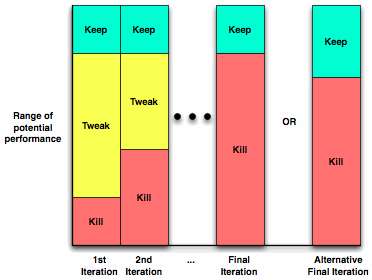Having previously reviewed Marcia Conner and Tony Bingham’s The New Social Learning, and Jane Bozarth’s Social Media for Trainers, I have now received my copy of Jane Hart’s Social Learning Handbook. First, I’ll review Jane’s book on it’s own, and then put it in the context of the other two. Caveat: I’m mentioned in all three, for sins in my past, so take the suitable precautions.
Jane’s book is very much about making the case for social learning in the workplace, as the first section details. This is largely as an adjunct to formal learning, rather than focusing on social media for formal learning. Peppered with charts, diagrams, bullet lists, and case studies, this book is really helpful in making sense of the different ways to look at learning.
The first half of the book is aimed at helping folks get their minds around social media, with the arguments, examples, and implementation hints. While her overarching model does include formal structured learning (FSL), it also covers her other components that complement FSL: accidental and serendipitous learning (ASL), personally directed learning (PSL), group-directed learning (GDL), and intraorganizational learning (IOL). The point, as she shares Harold Jarche’s viewpoint on, is that we need to support not just dependent learning, but independent and interdependent learning. And she’s focused on helping you succeed, with lots of practical advice about problems you might face and steps that might help.
Jane has a unique and valuable talent for looking at things and sorting them out in sensible ways, and that is put to great use here. Nearly the last half of the book is 30 ways to use social media to work and learn smarter, where she goes through tools, hints and tips on getting started, and more. Here, her elearning tool of the day site has yielded rich benefits for the reader, because she’s up to date on what’s out there, and has lists of sites, tools, people with helpful comments.
This is the book for the learning and development group that wants to figure out how to really support the full spectrum of performers, not just the novices, and/or who want to quit subjecting everyone to a course when other tools may make sense.
So, how does this book fit with Jane Bozarth’s Social Media for Trainers, and Conner & Bingham’s The New Social Learning? Jane B’s book is largely for trainers adding social media to supplement formal learning, where as Jane H’s book is for those looking to augment formal learning, so they’re complementary. Marcia and Tony’s book is really more the higher level picture and as such is more useful to the manager and executive. Roughly, I’d sell the benefits to the organization with Marcia & Tony’s book, I’d give Jane B’s book to the trainers and instructional designers who are charged with improving on formal learning, and I’d give Jane H’s book to the L&D group overall who are looking to deliver more value to the organization.
They’re all short, paperback, quick and easy reading, and frankly, I reckon you oughta pick all three of them up so you don’t miss a thing. You’d be hard pressed to get a better introduction and roadmap than from this trio of books. Let’s tap into this huge opportunity to make things go better and faster.
